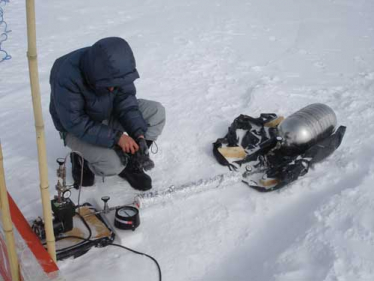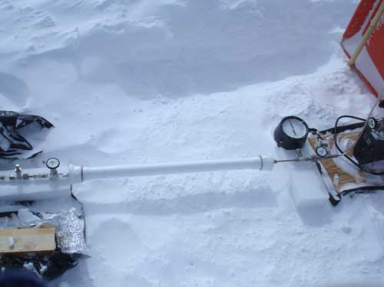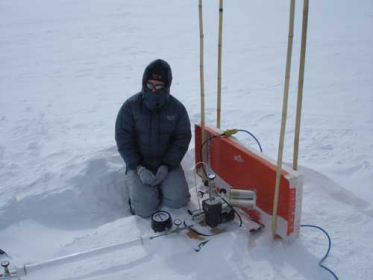Katrine Gorham, a graduate student from University of California at Irvine, has a busy day today. The winds are blowing approx 20 kts this morning (9 m/s) and her snow chamber experiment is set up outside. She has collected 1300 ml of surface snow in a quartz cylinder and attached that container to a tank with a mixture of hydrocarbons (butanes and butenes). The quartz cylinder is covered with foil to block out light. The hydrocarbons will flow through the snow filling the pores for 20 minutes at a rate of 200ml/minute.

Then Katrine went back out in the blowing snow to uncover the quartz and expose it to light (‘bake’) for the next 30 minutes. This baking time allows for chemical reactions to occur between the hydrocarbons and the gases in the snow. During this baking time, Katrine checked other instruments for the ozone and NO level as a check for her data.

After the baking time, Katrine collected a 2L sample of gases from the cylinder filled with the snow. This whole process repeats itself and samples will be taken every hour for eight samples. The last time Katrine set up this experiment she used ambient air to flow through the porous snow so she can compare her results. Once she is back at Irvine, she will take the gas samples and analyze them using gas chromatography to find out what gases were reacting with the hydrocarbons. Using the hydrocarbon rations, she will be able to detect HO and halogens.



Comments